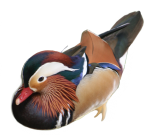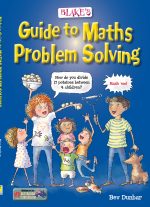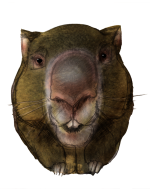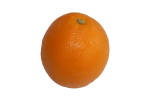What’s new in Maths Matters Resources?
AREA PHOTOGRAPHS – Billy the Tiler
Area is often a difficult substrand to photograph. Renovating a kitchen is a wonderful opportunity for Stage 3 students to see maths in real-life. And tiling the kitchen walls is a great way to think about many aspects of area.
How do you work out the area of each wall? What part of that area will need tiles (lots of Multiplication, Addition and Subtraction). Once you have your area worked out for one wall you then need to calculate the dimensions for any other wall too. What is the total area you want to tile? If you add an extra 10% for breakages and extra, how will you calculate your 10%?
And what about cost? What budget can you afford? If the tiles are $40 for one square metre, what is the total cost for your tiles? Do you need to round up or down to place your final order?
Often tile shops want you to buy by the box, not the square metre. If one box contains 1.5 square metres of tiles, how many boxes will you need?
And what about the cost of the tiler? If a tiler charges $75 to tile one square metre, how much money do you need to pay them for your job? Can you afford this?
Is it better to just paint the wall? Then you need to repeat all your calculations but using the cost of paint this time. If you need two coats and 1 litre does 15 square metres, how much paint will you need?
You can find more AREA Mental Maths Warm-ups here.
You can find suggested AREA Classroom Activities here.
You can find useful AREA Photographs here.
You can find useful AREA Graphics here.
ADDITION & SUBTRACTION – Combinations to 227
Addition activities should be much more meaningful than just adding random numbers on a worksheet. Our mega June family birthday celebrations for 5 family members revealed our combined ages total 227. Imagine all the possible number combinations you can explore to create this total. Look at each person in the photograph. Estimate their ages and try to find a combination of 5 different numbers that add to 227. How many different combinations can you discover? The actual ages are Sofia = 1, Jess = 28, Patrick = 40, Bev = 68 and Eric = 90. Of course it is not important to discover this exact combination, as long as you find at least two that work.

PLACE VALUE to 100 Photographs – 75
Numbers are all around us. This Number 75 is from a house in Bronte NSW. It is large, bold and beautiful. Imagine all the ways you can use this for a mental warm-up with Stage 2 or 3 students. You can count by 5s, 25s, 50s and 75s. You can discuss ways to add and subtract other 2-digit numbers to this mentally. You can list 75 things that start with “s” or “f”. You can put an alarm clock on for 75 seconds or 75 minutes and feel the time passing. You can look at a supermarket catalogue and find all the things you can buy for 75 cents (probably not so much these days!!!). You can estimate then measure things that are about 75 cm long. You can look at where 75 mL of water comes to in a variety of containers. You can ask 75 students at the end of recess to demonstrate different groups – e.g. on a signal they form into groups of 5 and count how many groups and how many leftovers to demonstrate 75 ÷ 5 = 15. Then try groups of 9? 75 ÷ 9 = 8 with 3 left. 12? 75 ÷ 12 = 6 with 3 remaining. 20? 75 ÷ 20 = 3 with 15 extras. What else might you try?
Place Value from 100 Photographs – 251 and 365
Place Value is one of the keys to success in mathematics. Studying this should be a regular part of your classroom activity. House numbers supply an endless variety of possibilities for Stage 1 students trying to understand how numbers to 1000 work. Ask each student to provide a photograph from their own home or apartment number.
What is the same about these two house numbers – 365 and 251?

They are both a 3-digit number, they are both more than 200 and less than 400, they both include odd and even digits, they both include the digit 5 but one is in the 10s place and one is in the 1s place, they are both odd numbers because the 1s digit is odd.
What else can your students discover? Where would you peg up these two number on a 1-1000 number line in your classroom? What do each of these numbers look like when modelled with Base 10 materials?
Use digit cards to model each number. What is the largest number you can make by rearranging these 3 digits? What is the smallest number you can make? How do you know this? Explain to a partner why you know your answer is the smallest (or the largest).
2018 NAPLAN NUMERACY Results and Analysis Year 3 and Year 5
Every year at Maths Matters Resources we used to review and analyse the data for NSW Year 3 and Year 5 NAPLAN Numeracy. It was a unique service that provided you with a different way to think about your NAPLAN results. We believe it is still most useful as it directs your attention to what really matters, not just whether your class or school is above or below a State average. And if you are from another state in Australia, the results can still be used effectively to compare with your own results.
We carefully look at the grade allocation for every question and then decide if it is correct (several questions have been incorrectly graded by the NAPLAN people …). If so, we then identify all the Stage below questions. For example, if your students are in Year 3, we look at any question graded as Stage 1 or Early Stage 1. For Year 5, we look at any question graded as Stage 1 or Stage 2.
We next consider if this question is one that we would expect 80% or more students to answer correctly. In other words, is this a basic or a core content question. These are the most important ones for your students to answer correctly. They indicate that your students have demonstrated an effective understanding of the stage below content. The 80% cut off mark still allows 1 in 5 students to answer incorrectly, for whatever reason. So what we expect is that 100% of these core/basic questions will be answered correctly by 80% or more students.
Unfortunately year after year we discover that too many students are not able to demonstrate this stage below understanding. And the 2018 results are no different.
Year 3:
-
42% were Core Stage 1 questions (15 out of 36 questions)
-
Only 73% of the Core Stage 1 questions scored ≤ 80% correct
(11 out of 15 questions) -
13% of these Core Stage 1 questions scored ≤ 50% correct (2 out of 15 questions)
Year 5:
-
48% were Core Stage 1 or 2 questions (20 out of 42 questions)
-
Only 70% of the Core Stage 1 or 2 questions scored ≤ 80% correct (14 out of 20 questions)
-
20% of the Core Stage 1 or 2 questions scored ≤ 50% correct (4 out of 20 questions)
You can view the full details at Whole School Planning – Maths Improvement Plans Terms 3/4.
We create follow-up NAPLAN activities to assist your students with any misunderstandings they may have. For example, you can find a targeted activity in Time Activities – Stage 1 ( F/1/2) that matches Question 31 : Year 3)
Our analysis helps you see exactly which aspects of Mathematics need more attention. These are the most urgent substrands that require your focus in Term 4 and beyond. For each Stage below question that did not get an 80% or more response, look at your school or class results to compare. These questions are marked in bold red and yellow background on the Year 3 and the Year 5 grid summary.
And please contact us if there is any way we can help you further with your own NAPLAN Numeracy analysis. We totally understand that NAPLAN is just one snapshot from all the work you do every year. But let’s look at the data and see what we can discover.
PLACE VALUE GRAPHICS – Australian Birds & Animals Posters 10 to 100
Here is a beautiful set of Place Value discussion posters for Stage 1 students to help you think about groups of 10. Our focus was on Australian birds and animals. Counting by 10s to 100 is an important skill for Stage 1 or early Stage 1 students. Seeing what these multiples look like also helps build spatial thinking about numbers. Sometimes we have a group of 10 in a line, a huddle, even vertically. Touch each group of 10 as you count aloud, 10, 20, 30 , 40 …
Why not blow these up to A3 size as a classroom display. Or print them off for specific students to take home as practice items.

We have included all 10 posters in Place Value Activities Grades F/1/2 (Stage 1).
You can also find Australian Animal Counting Posters 1-10 in Counting Activities.
GRAPHICS – Creatures – more Australian animals
Duffy has been busy creating more Australian animals for you. He has added a dingo, a goanna, an echidna, a hopping kangaroo and a wombat. Of course you can use these graphics in your literature or social sciences lessons too. But they are also a wonderful starting point for collecting many mathematical facts. How long do they live? How much do they eat? What is the average mass? Height? Length? Which parts of Australia do they live in? What might this look like as an area percentage? How many types of animals and birds like this are there? What is the estimated population size? What is the oldest one recorded? What is the largest one recorded?
For example, did you know that dingoes came from South East Asia? They are a subspecies of grey wolf and arrived in Australia about 5000 years ago, brought by Indonesian sea travellers. The average size is between 13 – 24 kg. And a dingo can turn its head almost 180 degrees, while we humans can only turn about 45 – 70 degrees. They live in packs of up to 12 dingoes. They can live for up to 15 – 20 years in captivity but only about 5 – 10 years in the wild. In the 1940s a huge dingo fence was built to keep dingoes away from farmland. It was 8614 km long but has now been shortened to 5614 km. And it costs about $10 000 000 each year in upkeep. And did you know that dingoes are not acrually dogs, even though they look very similar? Scientists think they are half way between wolves and dogs., based on their latest DNA sequencing.
MEASUREMENT – TIME ACTIVITY – Who is older (for Stage 2 students)
Research shows that many primary students have difficulty working out time sequences when looking at and comparing two or more calendar dates. Your students need more experiences at thinking about the days, months and years and what each of these means in relation to a time sequence.
And it is no wonder students have difficulty with this concept. Our National Curriculum virtually ignores this skill and it is rarely mentioned in class programs.
How do you know which of two dates is more recent? What clues tell you which event happened further back in time?
Time is invisible. You can’t hold it in your hand, touch, smell or taste it. It is a human construct that gives meaning to our daily lives. Over 1000s of years humans in every culture have worked out different ways to mark time passing.
We watch the sun appear to rise and set and we call this a day. We watch the moon in its daily passage around the earth and notice it takes about 7 days to go from a new to a half moon, then another 7 days to go to a full moon. Another 7 days takes you back to a half moon then another 7 days takes you back to a new moon. We call these 7-day cycles weeks and the 28-day cycle we call a month. We work out that the earth rotates around the sun in about 12 months so we create a year. And because none of these observed events is as regular as we would like them to be, we have worked out a complex system to help us see patterns and make sense of these natural phenomena. We put all this knowledge together and call it a calendar.
The activity Who is older? has been designed to help your students think about comparing calendar dates with a partner. There are 7 pages, including 18 People Cards. Each person has a different birthday so there is plenty here to get your class started.


MEASUREMENT – TIME – Playing around with a calendar
This is not a new resource but just a reminder that we have oodles of fantastic ideas to help you create effective maths lessons in your classroom. Calendars are hardly ever mentioned in the curriculum but knowing how to read them is an essential everyday skill. Every month, every class in your school can complete a blank calendar – one for themselves and one for class discussions. What month is it? What season is this? What day of the week does the month begin?
Just write the letters of the month in the balloons, then start writing in the numbers for the days of the week.

For more ideas like this see our Time activities, Time graphics or Time photographs.
PHOTOGRAPHS – Creatures
A trip to the zoo is a fascinating way to explore the grandeur of life on our Earth. Here are 19 new zoo photographs taken during a recent visit with our Canadian visitors. Each creature can be the centre of a whole week of mathematical investigations once you are back at school.
For example, leopards:
- live in parts of Africa and Asia
- are 1 of 5 species in the Panther family
- can run at up to 58 km/h
- can leap up to 6 m through the air
- live for 12 – 17 years
- males have a mass of up to 31 kg
- females have a mass up to 27 kg
MULTIPLICATION & DIVISION – Stage 2 Division Number Sentences
Each year we used to analyse the Year 3 and Year 5 NAPLAN Numeracy papers, looking for where students appear to have a major blockage to their understanding. For example the results for Question 21 in the 2017 Year 3 paper demonstrate that many Stage 2 students are insecure about how number sentences work.
This Stage 2 activity (Years 3/4), Match my Group (Division Number Sentences), helps these selected students realise that each part of a number sentence has meaning. If you rearrange the position of digits and symbols, then your number sentence may not make any sense. You can’t just put them wherever you like.
It also helps students realise that they need time to think about the actions in a number sentence. If they see the number 42 and the number 6, for example, do you add, subtract, multiply or divide them? You can’t just rush in with the first thing that comes into your head.
Each of the 4 stories in this activity is a single step story. Your students need to be able to manage linking their story and number sentence before tackling more complex events. You need to make time for your students to talk to each other, explain their thinking strategies, to work co-operatively on each activity. You can’t rush their understanding. You need that “aha” moment when they work out that actions matter, the placement of digits and symbols matter. Maths matters!
NAPLAN NUMERACY Year 3 and Year 5 NSW Results
For the last 15 years Bev Dunbar has been analysing the NSW NAPLAN results, looking for the “big picture” information to help all teachers better understand student misconceptions and blockages to understanding. When you look at your NAPLAN results, you are looking at individual students in your class and whether your school achieved at, below or above State averages. This information helps you plan targeted strategies for student improvement.
However here at Maths Matters we look at the whole state results, in our case that’s NSW. Fortunately NSW results are almost identical to the Australian results so we are able to see how Australian students as a whole are tracking in their mathematical progess. But unfortunately … this is not a pretty picture. It appears that our students are not able to adequately demonstrate competency on key test questions. In other words, they are not able to demonstrate that they have achieved key content outcomes.
We can argue about the nature of the test and whether we agree or disagree about its continuation. That is another story. The fact is that our government collects yearly data and that yearly data tells us something.
We analyse every test question and categorise it by both Stage and also by Core or Advanced. We call a test item a Core Stage question if we think it is suitable for most students to answer. For example, in Year 3 a Core Question is one that covers Early Stage 1 or Stage 1 concepts that we expect most Year 3 students to answer. We have a cut off point of 80% for our definition of “most”. So one in five students might answer this Core Question incorrectly. These may be students who are anxious about the test, may be working at an even earlier Stage, may have language and reading difficulties and so on. But we believe the question is an effective one to ask this cohort. Other questions in the test paper may be at the same Stage but may have twists and turns or too many steps in their solution. We call these test items Advanced. We do not expect 80% or more students to answer these questions correctly. These questions help identify more advanced mathematical thinkers in your class, school, state or country.
The strange thing is though, the questions that make up a particular NAPLAN Numeracy test more often than not do NOT test Core Stage below content. Some even test our students on content that is two Stages above. We are not sure what this data is supposed to tell us. We are perplexed as to why these questions are included. If you study William Shakespeare’s plays at University, for example, you would not expect to be tested on the plays of Anton Chekhov, just to see if someone has that knowledge.
-
In the 2017 Year 3 NAPLAN Numeracy paper, only 44% of the questions were Early Stage 1 or Core Stage 1. That’s 16 out of 36 questions. And only 50% of these 16 questions were answered by 80% or more Year 3 students.
-
In the 2017 Year 5 NAPLAN Numeracy paper, 50% of the questions were Core Stage 1 or Core Stage 2. That’s 21 out of 42 questions. And only 43% of these 21 questions were answered by 80% or more Year 3 students.
If you would like to see our one page summary of this year’s Year 3 results, click here.
If you would like to see our one page summary of this year’s Year 5 results, click here.
The summary is compact, with test question numbers on the left and the NSW test results for each question in matching spaces on the right. We also include an analysis of key concerns, based on these results. These concerns highlight the “big picture” view. Your individual students may have been successful in answering a question, but the overall results might indicate misconceptions you need to be aware of. We then develop resources that help your students overcome these blockages to their understanding.
ADDITION & SUBTRACTION Photographs – Blue Sharks
Our website is packed full of resources for you to use in your lesson planning. And even though we know you can manipulate our images yourself, we like to help make your life just that little bit easier by providing you with resources that are ready to use immediately. This new series of 1-10 blue sharks is such an example. We’ve repeated the shark image and saved it as 10 separate png images. You can now use these as part of your early addition and subtraction discussions. Here are 6 plus 8 sharks. That’s 14 sharks altogether.


We have also included the blue sharks on our MULTIPLICATION & DIVISION Photographs page as you could also reproduce each image to create as many multiples as you like. Here are 4 groups of 3 sharks, for example.
















POSITION PHOTOGRAPHS – Road Signs
Learning to read and interpret road signs is an important part of helping your students to locate themselves in 3D space. Our resources include a wide range of road signs for class discussions with any age group. For example, here is an animal crossing sign. What does this sign mean? Why has it been put up on this road? What do you have to do? Will the animals come from the left, the right or straight ahead? Why do you think this? Where might you see a sign like this one? Do you only look out for cows and sheep? Why were these two animals selected for the sign?
If you know individual students are travelling along country roads, encourage them to take their own photographs of unusual road signs. Have they seen one about emus? Deer? Kangaroos? Koalas? Use these for related class discussions about the importance of road signs and the information they tell us.
ADD & SUBTRACT – NAPLAN Follow-up – Match my Story
The first of many NAPLAN 2017 follow-up activities to help your students remove blockages. Only 48% of one large Year 3 cohort correctly matched a 2-digit addition and subtraction number story to the correct number sentence. The format of the question was slightly unusual and this seemed to have thrown the students off!!
Match my Story provides follow-up examples to discuss together with your Stage 1 students. It is also suitable for high and medium block Stage 2 students. Each set has more than one matching number sentence. It is vital to discuss both the ones that work and those that don’t. Help your students think more deeply about what they are learning.
PROBLEM SOLVING – Blake’s Guide to Maths Problem Solving
This guide is a vital tool for all middle and upper primary students who want to be successful maths problem solvers. The book is divided into three sections.
- Why Solve Problems? Explains which personal skills help you solve problems and what a problem solving cycle looks like.
- Common Problem Solving Strategies The 8 suggested strategies are: Visualise it, Make a table or graph, Guess and check, Break it into smaller parts, Work backwards, Look for a pattern, Eliminate possibilities.
- Types of Problems More than 140 sample problems include 1-step, 2-step, more than 2-step, multiple choice and open-ended problems.
The book includes detailed, suggested strategies, as well as TRY THIS and CHALLENGE activities to test your understanding. Answers are at the back of the book. It is suitable for students, teachers and parents working with Stage 2 or 3 students. This Guide is packed full of easy-to-understand explanations, real-life photographs and graphics. The book includes curriculum correlation charts. The book also showcases 7 outstanding male and female problem-solvers from across the world.
Click here to buy a copy directly from the publisher or to view sample pages.
NUMBER & ALGEBRA – PLACE VALUE – Hooray for Wombat
Our Maths Matters Creative Director, John Duffield, has just published his first iBook. It’s called Hooray for Wombat.
What a wonderful way to investigate the numbers 1 – 9 and then 10 – 90 using the delightful animal characters Duffy created originally for our website’s Place Value Graphics.
We look forward to many more books to come. Congratulations Duffy!
CHANCE GRAPHICS – Paper, rock, scissors
Paper/rock/scissors is a game of chance between two people. On a signal you each make one of 3 shapes with your hand – rock (a closed fist), paper ( a flat hand) or scissors (a fist with two fingers making a V). The outcomes are that you make the same shape or a different shape. If the shapes are different then paper covers rock (paper wins), rock crushes scissors (rock wins) and scissors cut paper (scissors wins).
This game began in China and Japan and is a simple way to select who goes first, for example, in another game. It is like flipping a coin, throwing a die or drawing a straw from a pile. It is a selection method.
Here is an official website that demonstrates the rules of this game.




STATISTICS & PROBABILITY – Chance Graphics
Duffy has just created a set of children to help you talk about Chance with your students. What’s the chance of having a boy or a girl? Twins? Triplets? Quadruplets?
Your chance for having a boy is about 50% and 50% for having a girl. But many of you will know families that are all boys or all girls. Having all boys or all girls is almost always due to simple chance. Scientists have actually researched this topic and find that boys are 52% more likely than girls, so you really have a very slight increased chance of having a boy.
Did you know that Nigerian women enjoy the highest rate of twin pregnancies in the world? About 1 in 22 Nigerian women have twins, or fewer than 5 twins for every 100 children born. In 2013 there were 4475 sets of twins born in Australia, out of a total of 298 984 births. This represented about 15 in 1000 births. That’s about 1- 2 in 100 births for Australian women. And of these 15 sets of twins, about 30% are identical. So fewer than 5 in 1000 births in Australia are identical twins.
In 2015, there were 84 sets of triplets born in Australia, out of a total of 305 377 births. That’s a 26 in 100 000 chance of having triplets. And there has been a 400 percent increase in the rate of triplet births over the last 20 years. To create identical triplets, the original fertilised egg splits and then one of the cells splits again. Identical triplets occur in about one in a million pregnancies, a rare event indeed.
Did you know that the odds of conceiving quadruplets is predicted to be one in 729 000? To create identical quadruplets, one fertilised egg needs to split into 4 separate embryos. Phew.
MEASUREMENT – VOLUME & CAPACITY – Stage 1 Estimating fifths
Regular practice estimating volumes will help your students develop effective proportional reasoning. We use this skill when we think about multiplication and division. We also use this skill when we think about fractions. I am working on a whole set of these activities but this is the first in the STAGE 1 set. It will help your students think about fifths. It will help them understand how to mentally divide a length into 5 equal parts. Later sets will focus on dividing a given volume into halves, thirds, quarters and tenths.
The theme of FILL IT TO THE TOP (fifths) is orange juice. Even though you are just discussing a picture card, encourage your students to imagine it is a container of real orange juice. You want to share this juice equally between 5 people.



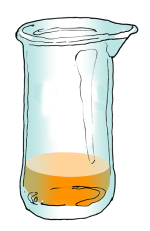



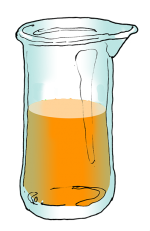

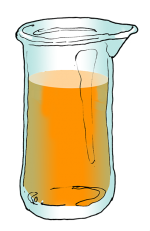

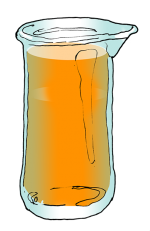
Develop a simple language routine to discuss the fraction parts. If this is one fifth, how many more fifths do you need to fill this container to the top? If this is two fifths, how many more fifths do you need to fill this container to the top? If this is three fifths, how many more fifths do you need to fill this container to the top? If this is four fifths, how many more fifths do you need to fill this container to the top?
Remember to talk about the full container as five fifths or one whole container full.
This activity is also part of our STAGE 1 Mental Warm-ups.

